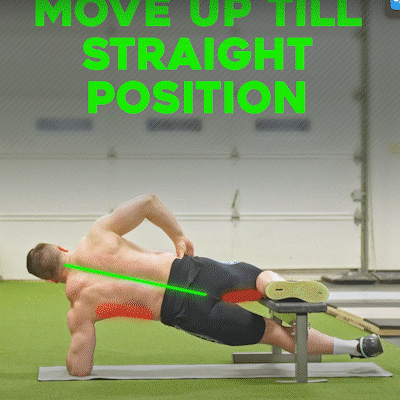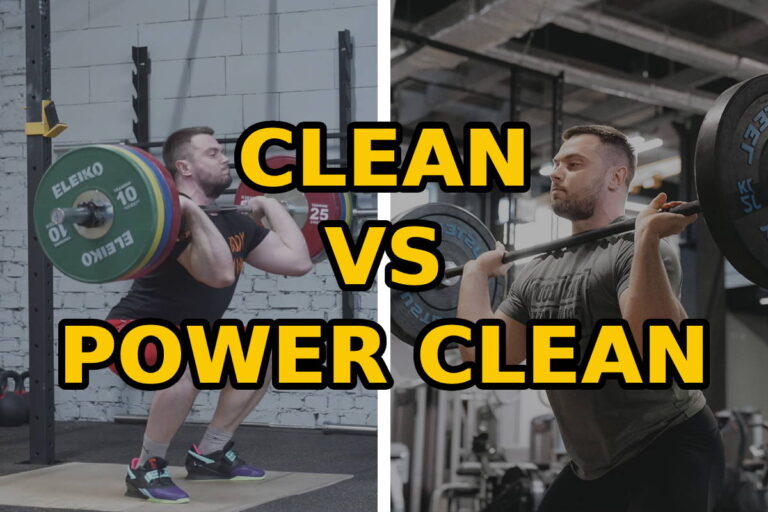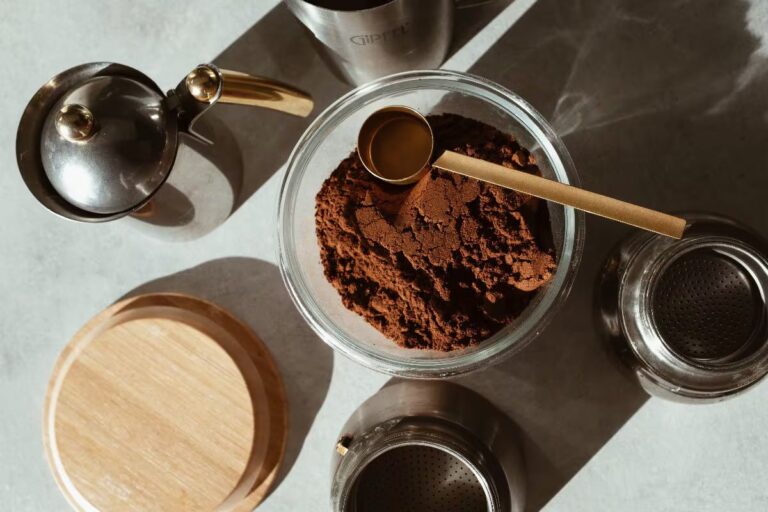Strength Training for BJJ Fighters (Detailed Program)
Reviewed by: Oleksiy Torokhtiy (21 years of Oly Lifting experience)
Unlike other martial arts that focus on strikes and/or kicks, Brazilian jiu-jitsu focuses on close-contact grappling including the application of holds, chokes, and joint manipulations. It means that BJJ fighters should be well-prepared for any intense sparring and competitions and be ready to counteract a bigger rival.
By keeping this in mind, BJJ practitioners should adjust a fitting BJJ strength training to their overall sports routine to gain more opportunities to become a better version of themselves and be always ready to perform at their peak.
Being a fundamental combat practice for MMA fights and the most gentle martial art sport, Brazilian jiu-jitsu focuses most on grappling and ground fighting, the skill to control the opponent through excellent technique and leverage for submission. It doesn’t involve punching and kicking which makes BJJ strongly separated from bloody MMA. Although, today’s MMA fights incorporate basic BJJ techniques that fighters find pretty efficient.
BJJ is based on strength and endurance development, proper clean techniques practice, and the ability for self-discipline and deep knowledge of one’s body.
That’s why BJJ practitioners can even call this martial art a human body science and human chess involving thought-out fighting and personal physical and mental improvement.
Considering these facts, BJJ strength training plays a crucial role because such workouts enable a fighter to sharpen their physical capabilities and improve their body condition.
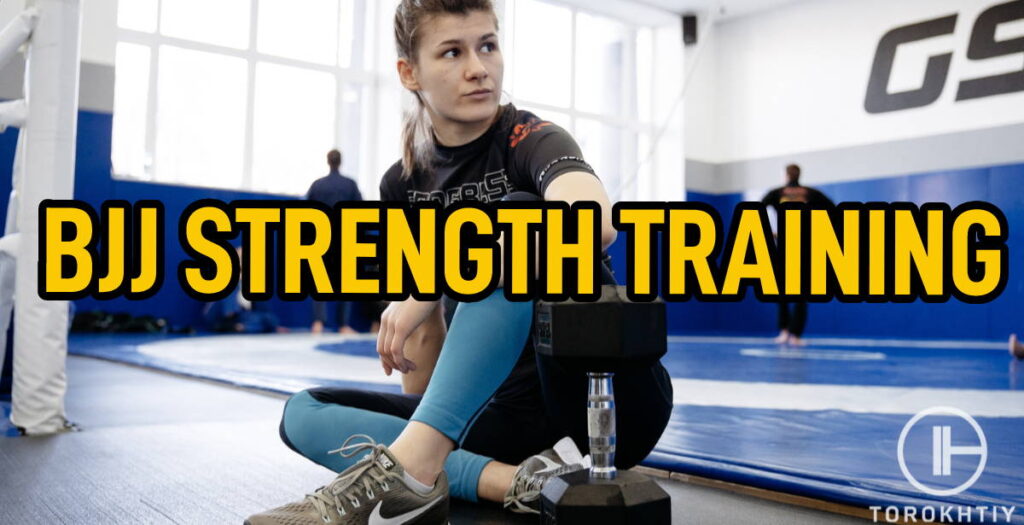
What’s Strength Training for BJJs
Brazilian Jiu-Jitsu or BJJ is a martial art that features devastating ground fighting techniques and involves grappling, self-control, discipline, and opponent submission. The grappling technique itself includes painful submission holds, joint and leg locks, armbars, chokeholds, and paralyzing blows.
BJJ states that there’s no matter what the physical metrics of a fighter are since a smaller wrestler can subdue a bigger opponent thanks to the superior leverage, firm grip, and position upon the rival.
To control and be able to subdue a stronger and bigger assailant it’s essential to have a powerful body, toned muscles, and exceptional fighting technique. That’s why strength training drills are a keystone in this sport.
Moreover, besides the physical component, it’s important to understand the key mechanisms and limits of your and your opponent’s bodies and minds.
BJJ has proven the physical benefits for wrestlers by enabling them to train their bodies and mind simultaneously. It includes a combination of intensive and explosive motions with pressure-based holding, pushing, and pulling that altogether develop stamina, power, and cardio capabilities.
Moreover, such high-intensity workouts involve the whole body and facilitate weight loss and lean muscle development which is important for a fighter. Meanwhile, BJJ teaches to improve a person’s perception of movements, body coordination, and balance during the reactive fight.
Considering a wide range of BJJ techniques, i.e., submissions, chokes, sweeps, mount, and locks, and that it involves a full body influence to a more grounded, defeated adversary, with simultaneous space management during the sparring or fight, improving your physical conditioning and working out muscles are an irreplaceable method to develop strength and be in a forceful assaulting stance.
So, what muscles are activated in BJJ? Entirely the whole body is involved in BJJ: core, abs, hip muscles, shoulders, forearms, and legs are most engaged when you perform submission attacks, shrimping, and bridging.
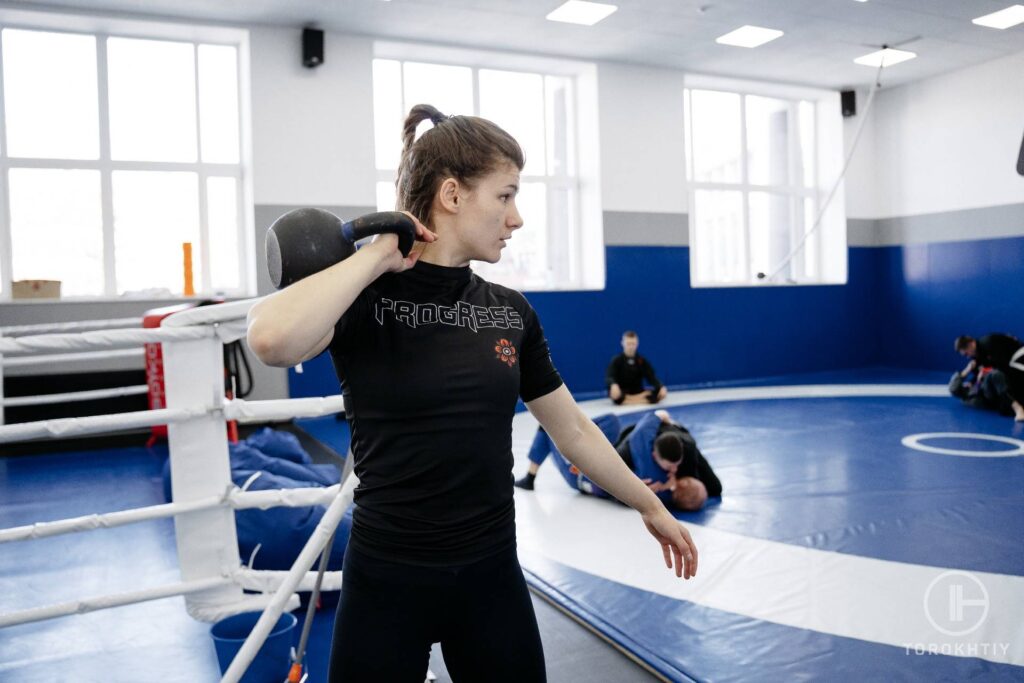
Although, it still depends on what BJJ style you prefer to practice, and whether you perform smaller or bigger movements (for instance, for pulling movements you use the biceps and lats).
Generally, Brazilian Jiu-jitsu followers perform the following practices to enhance their physical condition:
- train the core and back muscles, i.e., abdominal muscles, lumbar spine, back extensors, and quadratus lumborum, to make the body stiff and protect their internal organs from sudden kicks and punches
- control the pelvic-lumbar movements
- balance the upper and lower body
- develop core and spine flexibility
Powerful core muscles are essential for any martial art: they guarantee a strong connection between the upper and lower body and transfer reactive movements. A strong trunk is responsible for body stability and balance while sparring and fighting.
It also builds a muscle corset that keeps a posture and protects the spine. To develop these muscle groups and rotational movements, and gain better athletic performance, BJJ fighters can execute diverse variations of planks, sit-ups, or Russian twists.
To control a rival and perform the needed BJJ techniques, it’s also important to focus on grip strength. That’s why proper training for forearm development should be included in everyday workout regime: that can be grip squeezes, wrist curls, farmer’s walk with weight plates, and bottom-up kettlebell shoulder presses.
For strong back muscles, you can include such exercises as pull-ups, lat pulldowns, superman, renegade row, and TRX low row. Along with the back, your arms and shoulder joints will be more stable and stronger, and you’ll improve your posture.
Additionally, to strengthen the shoulder’s muscles to have no problems with throws, and control on the ground, you’d better try lateral and front raises and shoulder presses.
To keep balance and execute takedowns in BJJ, leg muscles require specific exercises like squats, lunges, leg curls, step-ups, and box jumps. Doing these workouts, you’ll develop glute muscles, hamstrings, quads, etc that are crucial for your body stability.
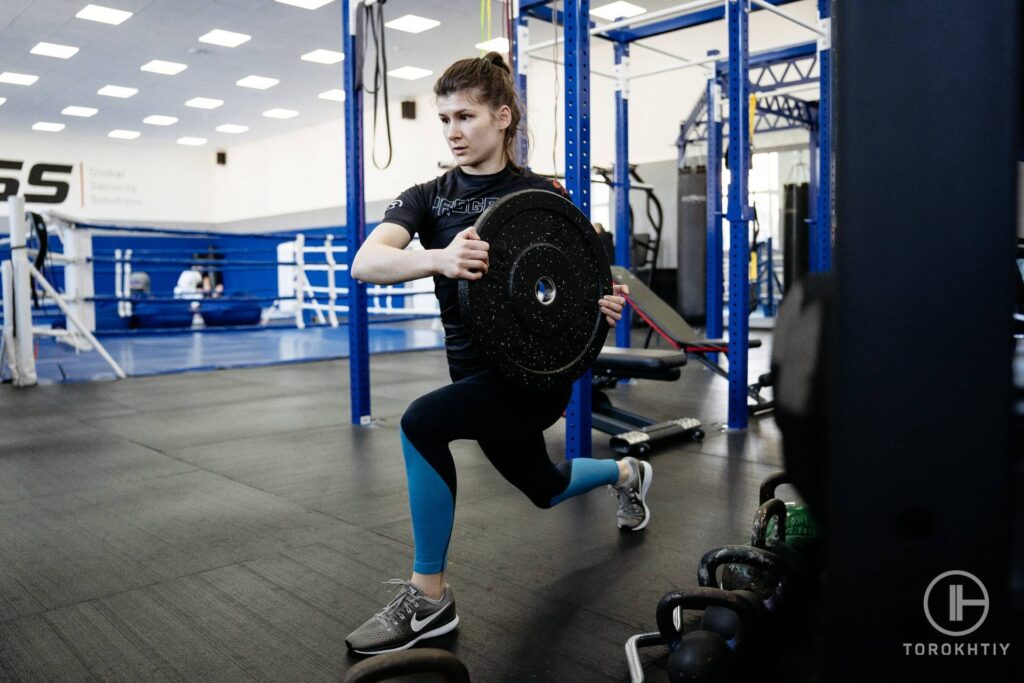
Benefits of Strength Training For BJJ
Improving General Performance and Adaptability to Tough Training
Since BJJ is a harsh fight that always entails regular tough training and sparring, it’s obvious that an athlete should work out different muscle groups to complete the rival and show their maximum.
Strength training for BJJ allows fighters to excel in their techniques, maintain control over adversaries, and resist their attacks. Strength workout improves overall endurance to maintain the high performance for long periods.
BJJ fighters need to generate explosiveness regularly to perform efficient takedowns, sweeps, and submissions. So, these exercises will help to develop such a feature by strengthening the fast-twitch muscle fibers that are responsible for explosive movements.
Besides boosting your power qualities, strength exercises increase bone density, which allows for preventing osteoporosis, bone fractures, and other bone injuries. Such drills facilitate athletes’ immunity and metabolism processes.
Facilitating Weight Loss and Calorie Burn
Exhausting strength workouts are effective in reducing body fat and increasing lean muscle mass, which always results in a more athletic physique. Since strength and weight training for jiu-jitsu involves a muscle-building process, you’ll get a higher metabolic rate.
This helps you to burn more fat, meaning you burn more calories. With regular training and proper nutrition, an athlete will speed up the metabolism processes resulting in a toned and muscular body.
Keeping Correct Posture and Eliminating the Back Pain
Strength exercises such as lifting weights will strengthen your back, shoulder, and core muscles, which can improve your posture and prevent lower back pain. Although, they should be done correctly without rounded back.
Plank is a basic exercise that works out your core muscles that keep a good posture. Deadlifts are useful for your back, glutes, and hamstrings, which altogether also maintain body posture.
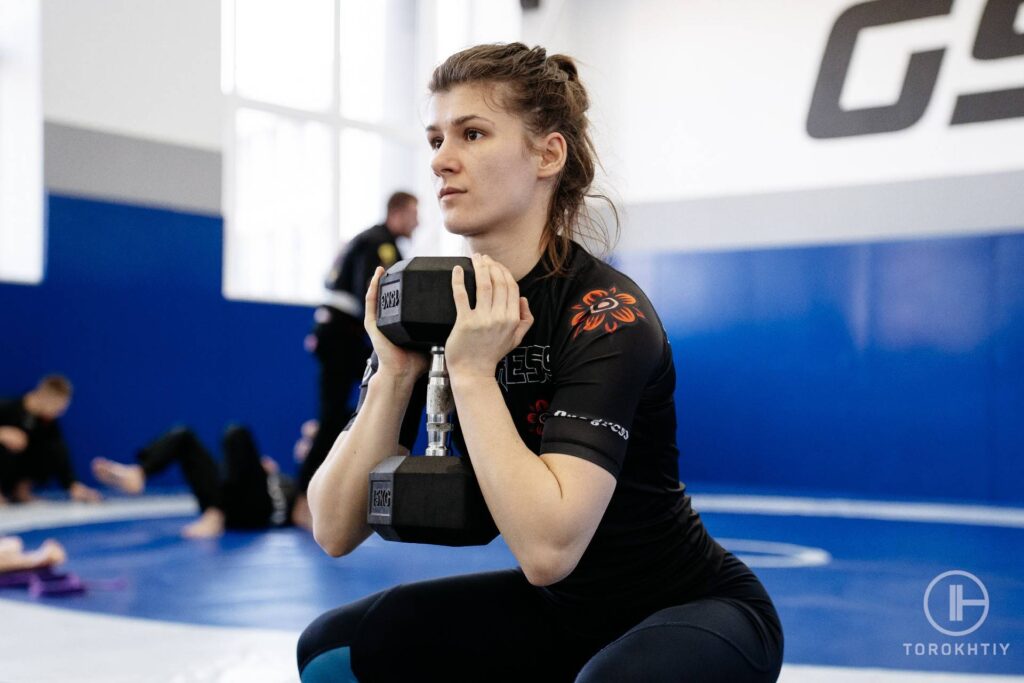
Enhancing Flexibility, Stability, and Balance
For any athlete, particularly for a BJJ fighter, it’s impossible to excel at stability without balance and flexibility. These features are interconnected and maintain well proper technique and guarantee a full range of motion to fire muscles and improve strength qualities.
With such properties, BJJ athletes will perform complex movements and enhance explosiveness and quick response.
Preventing Injuries
Due to constant strength-oriented workouts and tough grappling, BJJ athletes are exposed to serious health risks. The most widespread injuries are concussions, sprains, and joint dislocations that already become a common thing in this sport.
Other head injuries, neck, spine, and shoulder traumas, elbow and wrist dislocation, hip, knee, ankle, and groin injuries can also happen regularly in BJJ.
This type of martial art is physically demanding and requires constant training, a proper diet regime, and a lifestyle. So, BJJ practitioners can face regular fatigue and muscle soreness.
Thus, strength workouts will improve joint stability, connective tissues, and support muscles. It’s very important in BJJ because fighters constantly involve pulling, bending, and twisting forces.
Supporting Mental Health
Unlike MMA, Brazilian Jiu-Jitsu is a gentle martial art that besides body condition improvement, also maintains an athlete’s mind. By learning new techniques, and learning your body, your opponent’s behavior, and reaction, a BJJ athlete promotes self-improvement and control.
Strength workouts can improve mental clarity and concentration which will come in handy during competitions and sparring sessions.
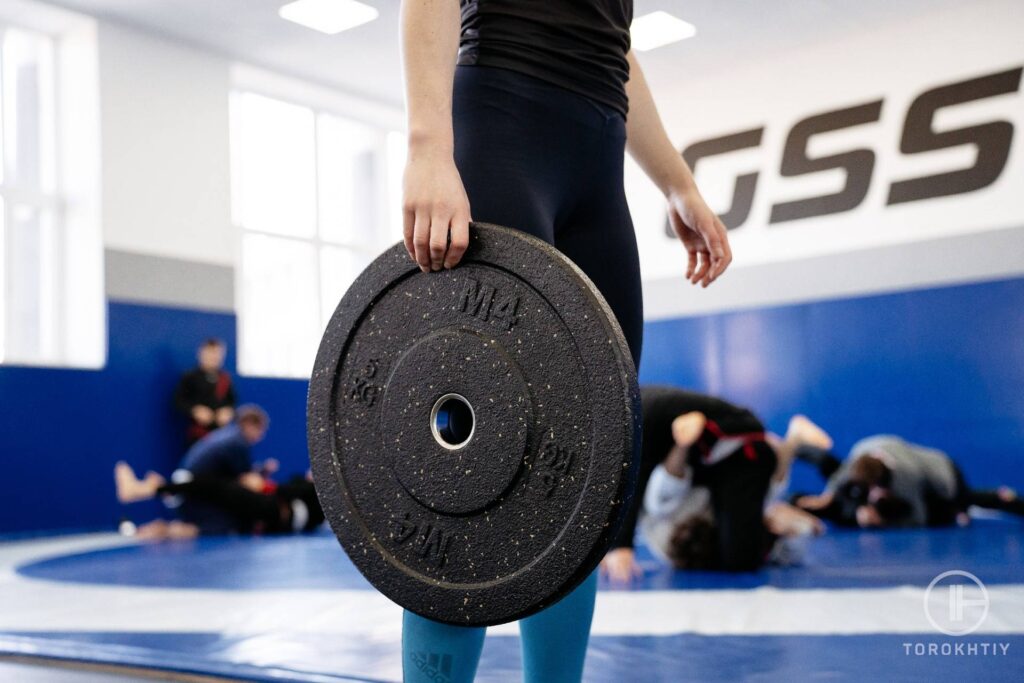
Strength Training Exercises for BJJ
In grappling sports, athletes must move rapidly in all directions and avoid being grappled, and stay in a dominant position for the whole fight session.
If you’re a beginner and your core isn’t developed enough or you don’t feel sufficient power to attack your rival, then think about exercises that will build up your abdominal muscles and facilitate your balance.
You can start with basic workouts that will help you to develop your core: it can be cleans, crunches, planks, heavy squats, overhead presses, deadlifts, burpees, and even yoga.
These exercises will target your entire body muscles by involving fast twitch, linear, and contraction movements. Here is a list of fundamental exercises that will promote a BJJ fighter’s general performance and boost strength qualities.
Power Cleans
Generally, Olympic lifts can boost grapplers’ speed, power, and explosiveness. So, power cleans are an irreplaceable exercise in the training routine for a BJJ fighter.
Being a dynamic exercise, it enables to develop explosive power which is vital in this type of a martial art where quick techniques such as passes and takedowns can be a decisive factor.
A clean workout is useful to enhance grip strength in grappling, core stability, posture, and hip mobility which altogether will benefit a wrestler on the mat. Power cleans require proper technique and physical form to perform them efficiently and without injuries:
- Stand in front of the barbell with your feet shoulder-width apart. Your toes should point forward or slightly outward.
- Squat down and grab the bar with an overhand grip that is a slightly wider hand position than shoulder-width. Your hips should be lower than your shoulders and your chest should be up.
- Inhale deeply and tighten your core and back muscles. Stand up explosively and pull the barbell up with your arms, keeping it close to your body.
- When the bar reaches your hips, quickly shrug your shoulders and pull the bar up to your shoulders with your elbows bent.
- Catch the bar with your shoulders and upper arms, keeping your elbows pointed forward.
- Stand up tall and lower the barbell back down to the starting position.
Deadlifts
Deadlifts are great for building lower body, core, and back strength which is useful for BJJ fighters in improving their techniques, i.e., takedowns, guard passing, and overall strength on the mat. You’ll be able to work out multiple muscles simultaneously: hamstrings, glutes, quadriceps, lower back, upper back, and core muscles.
Additionally, this jiu-jitsu weight training helps to improve your grip strength, which allows you to get and maintain control of your rival’s limbs and execute joint locks and chokes.
Good gripping is effective for a successful takedown and your ability to resist your opponent’s attacks and maintain your position.
Deadlifting increases muscle mass in the back, leg, and core areas, and also prevents back pain and injury, by improving overall posture and body mechanics.
To perform deadlifts, follow these steps:
- Set up the barbell with the needed weight on the ground.
- Stand with your feet shoulder-width apart.
- Squat down and grab the barbell with an overhand grip with your hands slightly wider than shoulder-width apart. They should be placed on the bar outside your legs.
- Keep your back straight and your chest up. Your head should be in a neutral position. Begin lifting the bar by driving through your heels and lifting with your legs.
- As you lift the bar, exhale and engage your core muscles to stabilize your spine. Keep the bar close to your body as you lift, and avoid rounding your lower back.
- Lift until you are standing upright with the barbell in your hands. Hold this position for a moment, then slowly lower the barbell back down to the ground.
Pull-ups
Pull-ups can help BJJ fighters improve their grip strength and ability to control an opponent. This exercise is effective to improve upper body strength, especially back and arms. Developing pulling power with pull-ups brings BJJ fighters an advantage in certain positions, such as when controlling an opponent on the ground.
- Grab the bar with the overhand grip with hands slightly wider than shoulder-width apart. Hang from the bar with your arms fully extended.
- Activate your back muscles: keep your shoulders down and back, engage your shoulder blades, and pull your elbows down towards your sides.
- Pull yourself up: keep your core tight and legs straight, and pull yourself up towards the bar until your chin is above the bar.
- Lower yourself down: slowly lower yourself back down to the starting position.
Squats
This exercise works out multiple muscle groups, predominantly the lower ones: the quads, hamstrings, glutes, and core too. For BJJ fighters, it’s essential to develop lower body strength to execute takedowns and keep a strong base during the fighting.
An alternative for standard squats that will benefit BJJ practitioners is the Zercher squat which is an excellent exercise to develop lower body absolute strength and stability for grapplers.
The Z squat technique involves the barbell held in the crook of the arms in front of the body. This exercise trains the quads, upper back, and core muscles. Here’s a set-by-step guide on how to perform it correctly:
- Set the barbell in the rack below the elbow height.
- Step forward to the bar so that the metal touches the elbow crease.
- Bring your forearms and hands upwards so the weight rests in your arms.
- Keep your elbows locked in place.
- Walk your hips under the barbell.
- Inhale, brace, and lift the bar upwards and away from the support of the rack. Take two steps backward.
- Break at the hips and squat.
- Squat until your elbows touch your thighs.
- Squat the weight back up to the starting position.
Russian Twists
Russian twists are good for developing core strength and stability. Also, you’ll increase your hip and trunk flexibility. This exercise can help BJJ fighters improve their ability to twist and rotate their bodies, which is important for executing arm bars and triangle chokes. This workout helps wrestlers to execute more powerful punches, kicks, and grappling techniques.
To perform a Russian twist, you should sit on the ground with your knees bent and your feet flat on the ground. Then, lean back slightly and twist your torso to the right and then to the left. Keep your core involved and your back straight throughout the entire movement.
Landmine Rotations
Landmine rotations or twists are helpful in developing rotation power, stability, core, and shoulder strength. It’s good training to build functional strength and get some muscle mass. Additionally, this exercise can promote your coordination and balance between your upper and lower body which improves greatly BJJ performance:
- Insert one end of a barbell into the landmine device and load weight plates onto the other end. Stand perpendicular to the landmine, keep your feet shoulder-width apart and knees slightly bent.
- Grasp the end of the barbell with both hands. By keeping your arms straight and your core tight, rotate your trunk by pivoting on your back foot.
- Make a little pause at the end of the rotation and rotate back to the starting position. When you end up a set for the one hand, switch sides, and execute the same movements on another side.
Key Factors in Bjjs’ Strength Training Routine
To gain the defined sports goals, BJJ athletes set realistic goals, even short-term ones, to gradually improve their physical condition, strength, mental firmness, endurance, keep a healthy diet, as well as excel at BJJ technical skills.
Include Mobility & Flexibility Exercises
BJJ players must combine flexibility with strength development because they will meet not evenly-matched opponents in the competition. Mostly, they fight with stronger, or taller adversaries. That’s why strong legs and more flexible hips give you more chances of winning the combat from the bottom.
Yoga and stretching exercises for BJJ can be very beneficial: better mobility gives you more opportunities to evade quickly and submit a rival on the mat. You’ll be able to create greater amplitude and better BJJ strength.
Find Time for Plyometrics
Plyometric explosive movements are key to developing the strength of your lower body. Explosive power is your first line of defense. Such exercises involve rapid and powerful pre-stretch where the muscles are loaded after strength drills to reach optimum force. These are box jumps, long jumps, clap push-ups, double-unders, etc. But technically, you can turn every drill into a plyometric source.
Consider Training Periodization
Specifying time frames for workout sessions will help to move forward to the set sports goals. Periodization is one of the decisive points in a BJJ fighter’s success that helps to avoid overtraining, recover mentally and physically, and get benefits from a well-structured and athlete-oriented training approach.
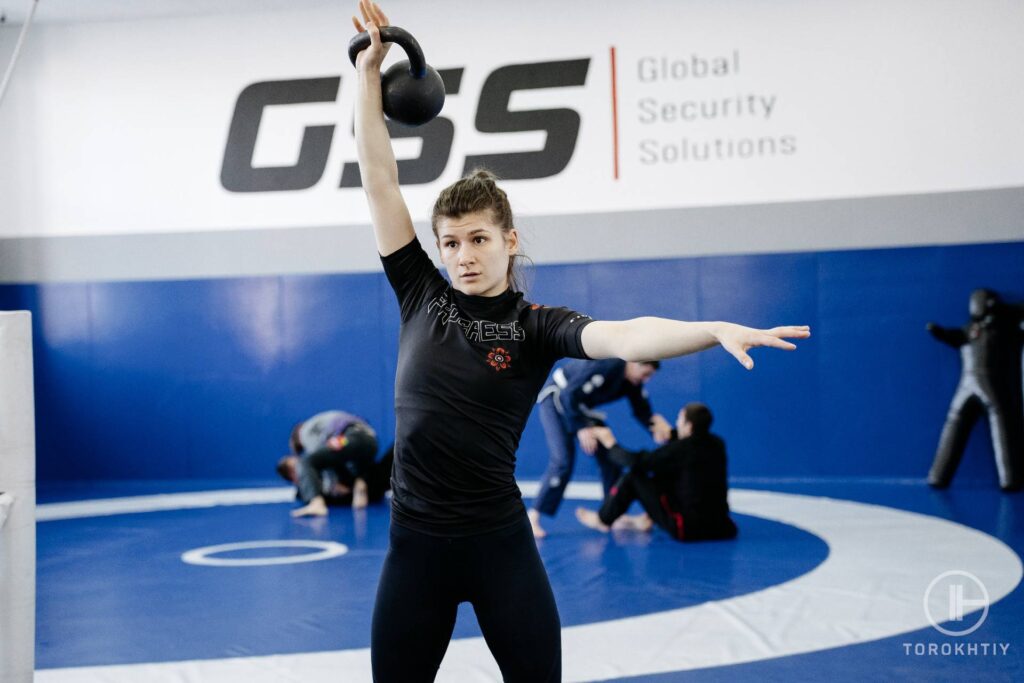
BJJs Strength Training Programming
A prospective and promising BJJ practitioner should be confident in his grappling and choking techniques, be well-versed in fluid motions and flexibility, and at the same time keep a cool mind to subdue an opponent.
BJJ followers prefer to combine max effort strength training with sports practice honing that requires managing the correct schedule customized to the peculiarities and needs of each athlete. It’s preferable to keep enough time between strength drills and sparring sessions to ensure optimal energy receiving and improving performance with each session.
Discipline is a keystone in mastering BJJ practice. It’s impossible to expect perfect outputs from the body in a short time. Only after adapting to the tough BJJ weight training program, the organism will respond properly to the demands of training.
This involves not only a stable sports regime, but also maintaining a healthy sleep schedule and choosing appropriate nutrients, and preserving the needed hydration demands.
Taking into account the key motto of the Brazilian jiu-jitsu, a smaller and physically weaker athlete can surpass a bigger and stronger rival. The matter is their skills in applying proper technique effectively, knowing an opponent and their behavior well, and being confident in personal superiority.
It’s obvious that when competing against a stronger adversary, a smaller fighter strives to show the maximum of his physical conditioning and fighting skills to play at a high level.
That’s why strength, speed, and endurance can be decisive in this situation. With proper strength training, an athlete will succeed to develop the needed qualities that will give him an advantage in the fight and enable him to display sports skills at the highest level.
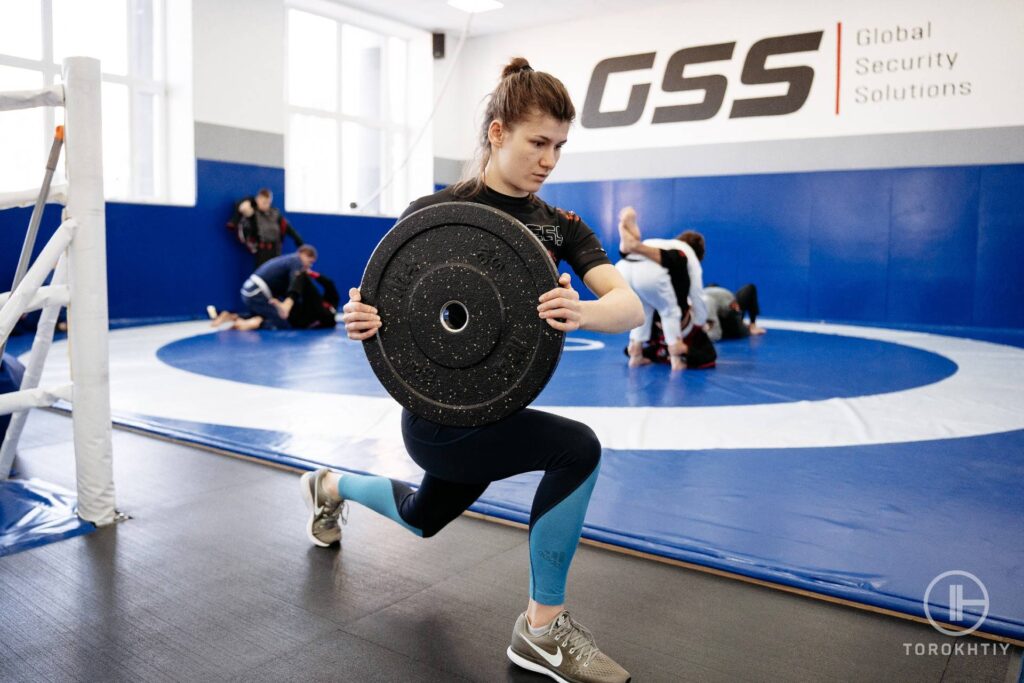
The Basic Equipment You Need
To master both technique and strength in BJJ, it’s important to choose proper BJJ training equipment that can be applied for gym workouts and be used at home as well. Here we present you the list of the most essential tools that will complement your training and help to improve your performance:
- Buying a barbell can be quite challenging. But, it’s better to choose a high-quality one that will serve you for a long time and that will enable you to apply different weights as an integral part of your routine in weight lifting for jiu-jitsu. This equipment will enable you to perform heavy power lifts and even try some Olympic weightlifting techniques.
- Squat racks are perfect for home usage if you’re limited in space. This equipment is useful in performing strength-oriented squats with weights and pressed off the pins for raw strength development.
- Bumper plates give you the versatility to perform the Olympic lifts and advance your strength potential.
- BJJ mat is a very useful thing for BJJ fighters. You can roll it and train your techniques. One-inch-thick mats are perfect since anything thinner won’t provide enough protection. Being puzzle mats, you can easily take them apart and store them in a small space.
- You can use an adjustable bench to do incline presses and chest-supported rows that can’t be performed with a flat bench.
FAQ
What Lifts Are Best for Bjjs?
The most useful workouts with weights for high-quality BJJ preparation involve bench presses, deadlifts, and squats. For instance, the bench press is one of the best drills for upper body strength, specifically targeting the pectorals, triceps, and shoulders. These workouts facilitate strength, and work multiple muscles and joints, so the results will transfer directly to athletic performance.
Does Weightlifting Help Bjjs?
There’s no difference in what sports you represent, you’d better incorporate the BJJ lifting program into your regime to improve your general athletic performance. For BJJ, weightlifting is one of the major ways to boost a fighter’s stamina and power. Considering the basic BJJ strength training program for Brazilian jiu-jitsu, strength workout, and weight lifting are the major parts of the sports schedule of every serious athlete. Also, in addition to lifting weights, BJJ fighters need to train their endurance, stability, and flexibility to show their best condition on the mat.
How Often Should a Bjj Lift Weights?
Two or three times per week of weight training is enough for a BJJ athlete in the season. If you’re in a pre-season period, your strength training program should contain more than three sessions per week.
Conclusion
No matter whether you’re a newcomer in BJJ or an experienced fighter, following well-balanced BJJ strength training is a key point in enhancing your general conditioning, developing fighting techniques, and building up personal properties to be able to withstand pressure-based fights. It’s important to concentrate on the body’s muscles, range of movements, and mental health to gain a privilege and submit an opponent.
Along with preserving a healthy diet, sleep regime, and consistent training sessions, an athlete will succeed to get considerable results in this discipline.
But, do you have questions regarding what strength workout will suit you best, or what muscle groups to focus more on to improve your endurance, gripping strength, or generally make you more mobile and flexible? Want to get personalized support or advice concerning an individual training regime?
Feel free to write your queries to us, and expert-level sports specialists will outline to you everything that matters to you.
Also read:
- Strength Training for Football Players
- Weightlifting for Basketball
- Strength Training for Wrestlers
- Strength Training for MMA Fighters
- Strength Training for Runners
- Firefighter Workout Plan
- Strength Training for Rowers
References:
- A Systematic Review with Meta-Analysis on the Effects of Plyometric-Jump Training // NCBI: https://pubmed.ncbi.nlm.nih.gov/36828318
- Injury in Brazilian Jiu-Jitsu Training // NCBI: https://pubmed.ncbi.nlm.nih.gov/31173700/
- IThe Effect of Short-Term Sport-Specific Strength and Conditioning Training on Physical Fitness // NCBI: https://pubmed.ncbi.nlm.nih.gov/30116107
- Effects of High-Intensity Interval Training in Combat Sports // NCBI: https://pubmed.ncbi.nlm.nih.gov/31904713
- Experience, Training Preferences, and Fighting Style Are Differentially Related to Measures of Body Composition, Strength, and Power in Male Brazilian Jiu Jitsu Athletes // NCBI: https://pubmed.ncbi.nlm.nih.gov/36668717
Why Trust Us?
With over 20 years in Olympic Weightlifting, our team does its best to provide the audience with ultimate support and meet the needs and requirements of advanced athletes and professional lifters, as well as people who strive to open new opportunities and develop their physical capabilities with us.
By trusting the recommendations of our certified experts in coaching, nutrition, dietology, and sports training programming, as well as scientific consultants, and physiotherapists, we provide you with thorough, well-considered, and scientifically proven content. All the information given in the articles concerning workout programming, separate exercises, and athletic performance, in general, is based on verified data. We ensure that you can rely on our professionals’ pieces of advice and recommendations that can be treated as personalized ones which will benefit you and fully meet your needs.
The product testing process is described in more detail here
Author: Sergii Putsov
Head of Sport Science, PhD
Best Results: Snatch – 165 kg,
C&J – 200 kg
Sergii Putsov, Ph.D., is a former professional weightlifter and National team member, achieving multiple medals in the 94 kg weight category at national competitions. With a Master’s degree in “Olympic & Professional Sport Training” and a Sport Science Ph.D. from the International Olympic Academy, Greece, Sergii now leads as the Head of Sport Science. He specializes in designing training programs, writing insightful blog articles, providing live commentary at international weightlifting events, and conducting educational seminars worldwide alongside Olympic weightlifting expert Oleksiy Torokhtiy.
Reviewed by: Oleksiy Torokhtiy
Olympic Weightlifting Champion
Best Results: Snatch – 200 kg,
C&J – 240 kg
Oleksiy Torokhtiy is a professional athlete boasting 20 years of experience in Olympic weightlifting. With multiple European and World titles under his belt, he has showcased his prowess in two Olympic Games (Beijing 2008 and London 2012). Upon concluding his illustrious career, Oleksiy dedicated himself to coaching. By 2022, he had conducted over 200 weightlifting seminars worldwide. He is the visionary behind an international sportswear and accessories brand known for its motto, “Warm Body Cold Mind.” Additionally, he is an esteemed author and the creator of a series of training programs and eBooks.




